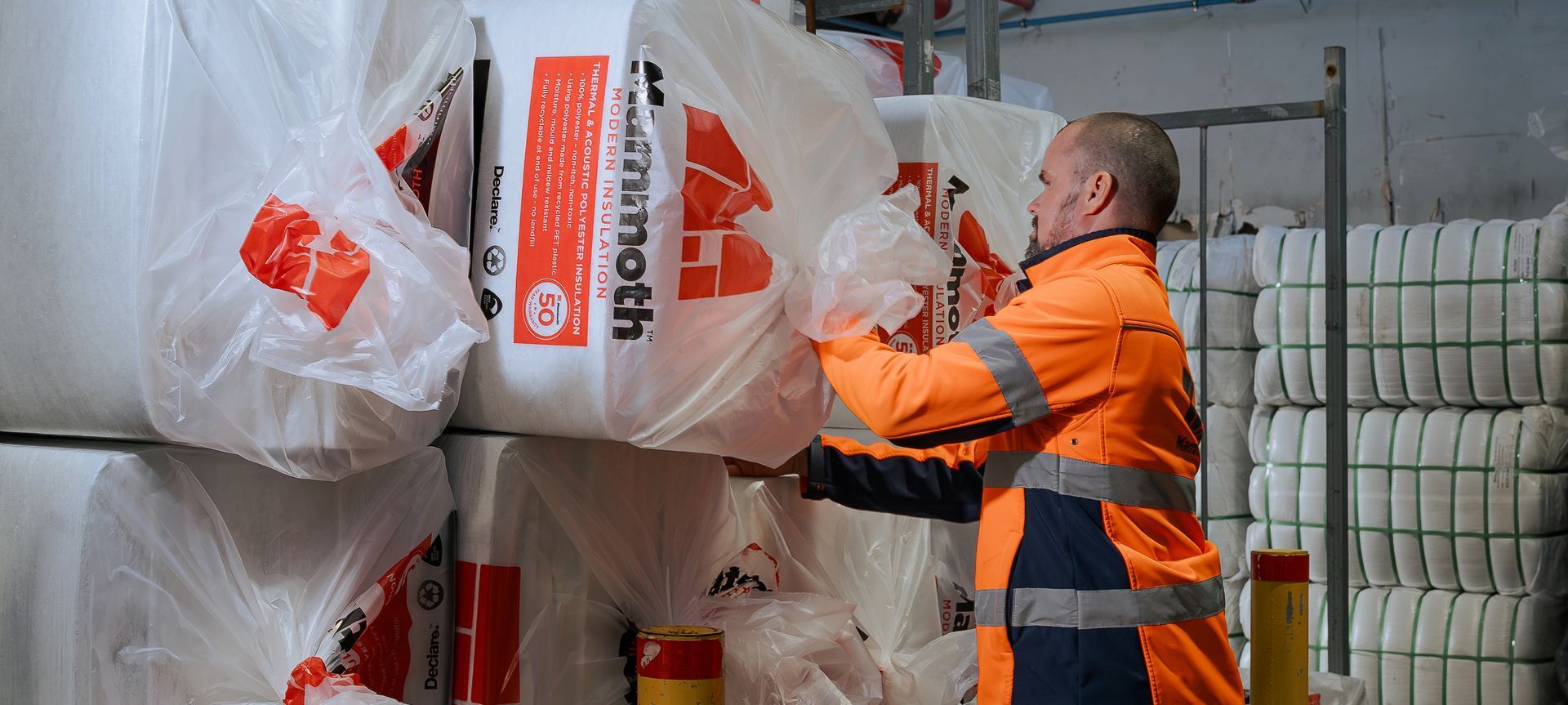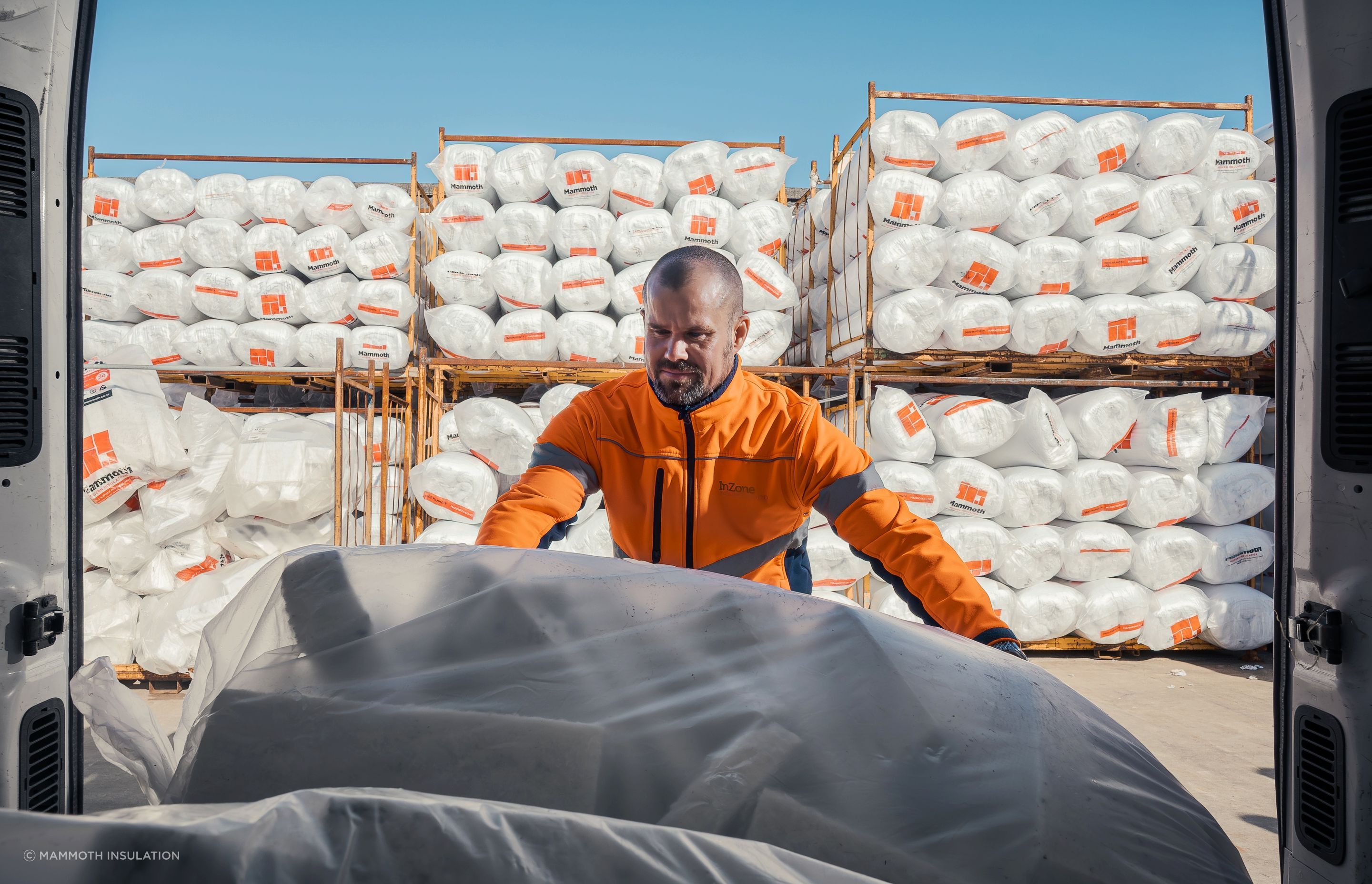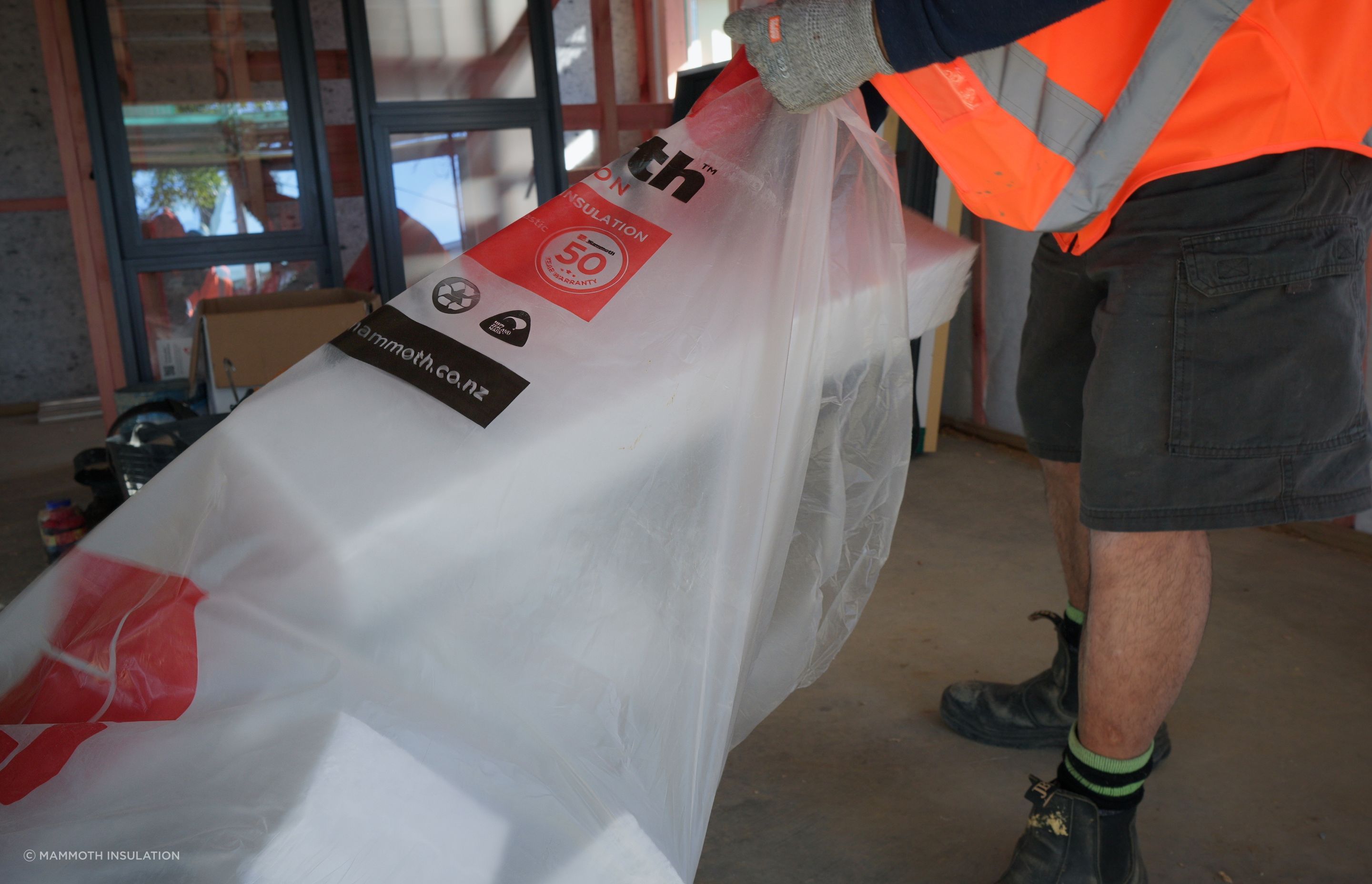Tackling New Zealand’s construction waste problem with a Mammoth effort from local insulation manufacturer
Written by
23 July 2024
•
4 min read

Solving the construction waste problem in New Zealand is not an easy task, especially as almost half of the waste in our landfills is generated by the construction industry. To reduce the amount of waste we produce, we need to start at the beginning of the cycle: product manufacturing. If we design our construction materials to be reused or recycled at the end of their lifetime and set up processes to retrieve and return these materials to recycling facilities, we will see a significant reduction in waste going to landfills.
Not one to shy from a challenge, New Zealand insulation manufacturers, Mammoth, are doing their bit for the cause by committing to sustainable practices in all aspects of their business. Part of this commitment includes their Toitū carbonreduce certified insulation manufacturing and their take-back programme.
ArchiPro caught up with Justin Grimshaw of Mammoth Insulation to learn more about the company’s sustainability story.

Reuse and recycle: a zero-waste factory
Mammoth prides itself on the fact that every 100 sqm of its product contains the equivalent of up to 15,600 500ml plastic bottles of PET. While this is an impressive feat, recycling plastic once only diverts it from the landfill for so long. Without an effective way to collect and return used products and offcuts to a facility where they can be recycled and reused again, it only has one place to go.
Fortunately, Mammoth has thought about this. “For many years we have had a take-back programme where anyone can bring back Mammoth offcuts to our factory for recycling,” Grimshaw explains.
“While this is great, it is prohibitive to many builders, installers, and clients who work outside of Auckland where our factory is located. We know that to capture as much of our product as we can, we need to provide easy solutions for clients using Mammoth to do the right thing and recycle it. For this reason, we have opened up take-back locations in Hamilton, Tauranga, and Wellington, with more to follow. For large volumes we will also collect from clients free of charge. We also have our own install network which is a huge advantage as they send back mountains of product weekly for recycling.”
As the entire Mammoth range is designed to be recycled, the addition of new take-back depots is great news for their clients. Regardless of where they are and what product they’re using, they can still do their bit and return unused products or have it collected.



Offcuts and unused products are just one part of the problem, though. When materials reach the end of their lifetime in a building, they are either removed and replaced or taken down during demolition. Even though a significant amount of time has passed from the date of installation, it’s still important for the manufacturer to think carefully about what happens to their product at this stage. A responsible manufacturer will consider themselves stewards of the product at every stage of its lifecycle, which is why Mammoth encourages the reuse of their product at the end of its life, too.
“Mammoth products can enter the take-back scheme at any stage, be it manufacturing offcuts, installation offcuts, fit-outs, refurbs and at end of life. As mentioned above, we currently have three locations, plus our factory, where any Mammoth products can be returned for recycling, with more to follow. We have also been working with construction companies and builders on specific projects to ensure the product is recycled. The more we can recycle, the less ends up in landfill,” Grimshaw says.
Once the product returns to the company’s Auckland factory, it is fed into the shredding line and then back into the production line. This purpose-built reclaim line ‘reopens’ the polyester, returning it to fibre form. Once the fibre is ready it is recorded as raw material stock available for use in the manufacture of new products.
Mammoth’s recyclable material doesn’t stop at insulation — all product packaging is designed to be recycled, too.
“We actually reduced the amount of colour in our packaging a couple of years back for the sole reason of it being accepted by recycling centres. Mammoth packaging is 100% recyclable.”

Carbonreduce manufacturing
To run a sustainable business you need to be looking at all aspects of operation. Mammoth has achieved its carbonreduce accreditation by measuring, reporting and reducing emissions from both manufacturing and product distribution.
“We feel it is important to consider the environment in all facets of our business, so measuring and monitoring our impact is the only way to understand how we can improve. Our measured carbon emissions are monitored and continually reduced through a variety of smarter business practices.”
Learn more about Mammoth.
